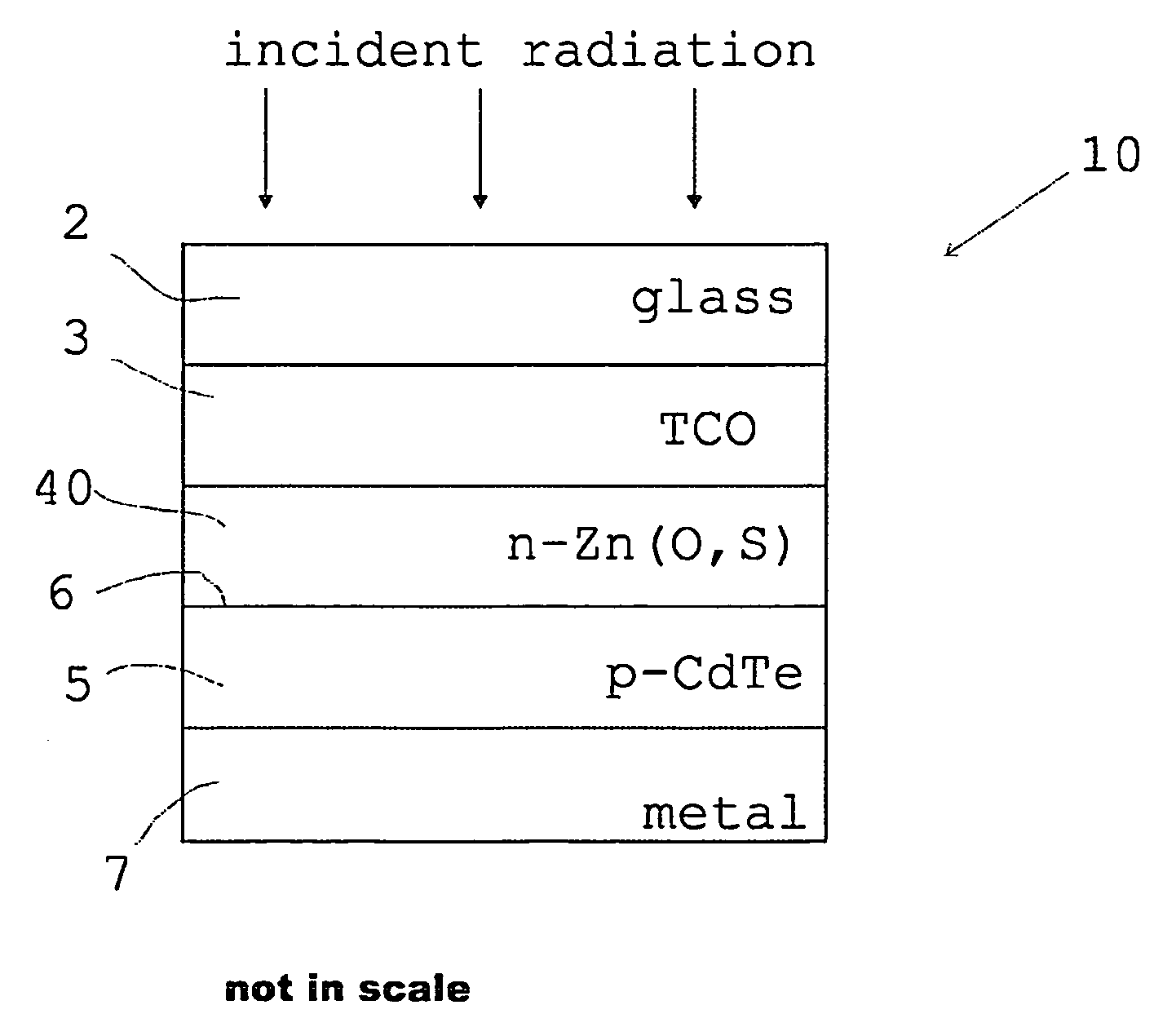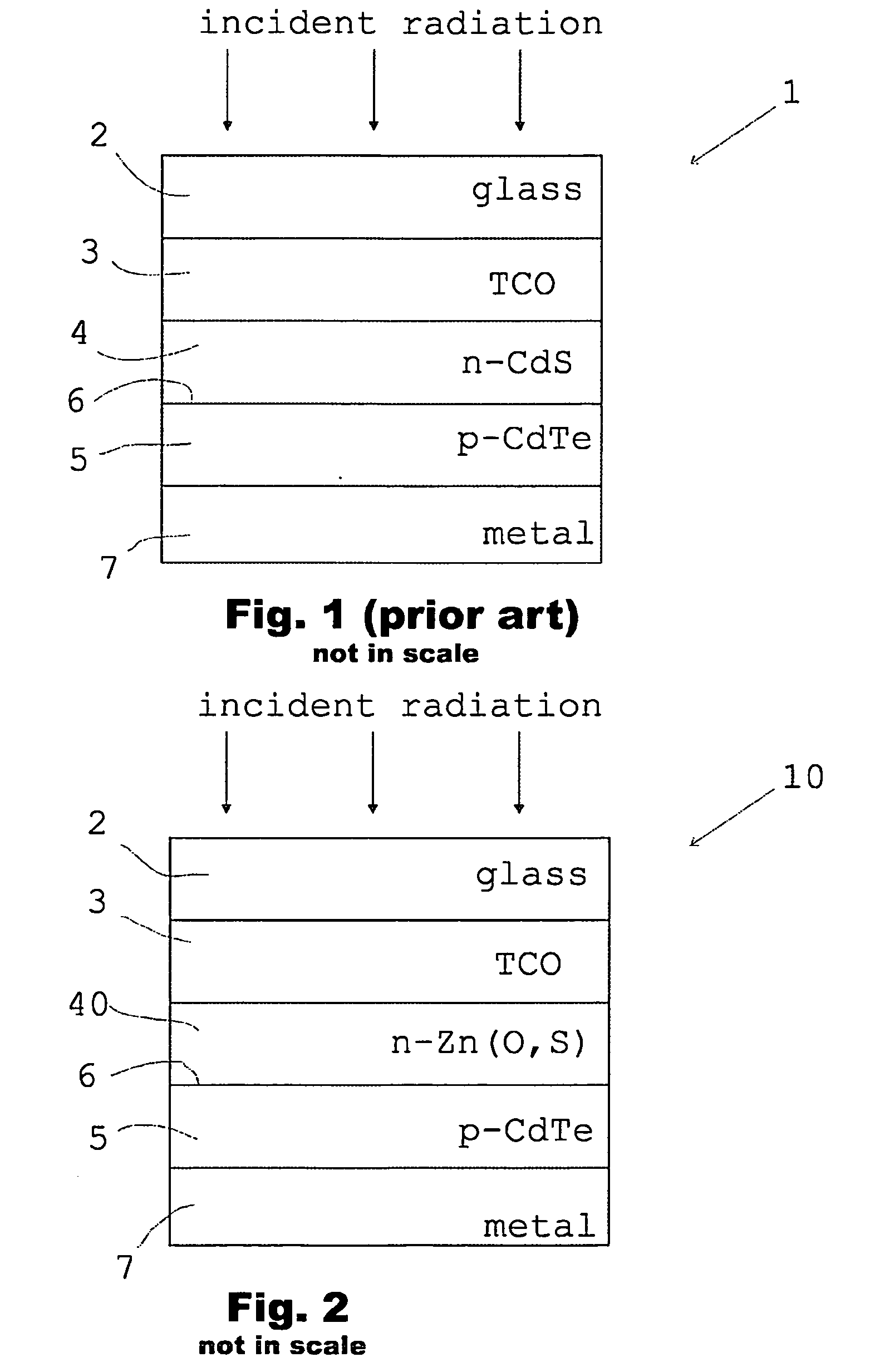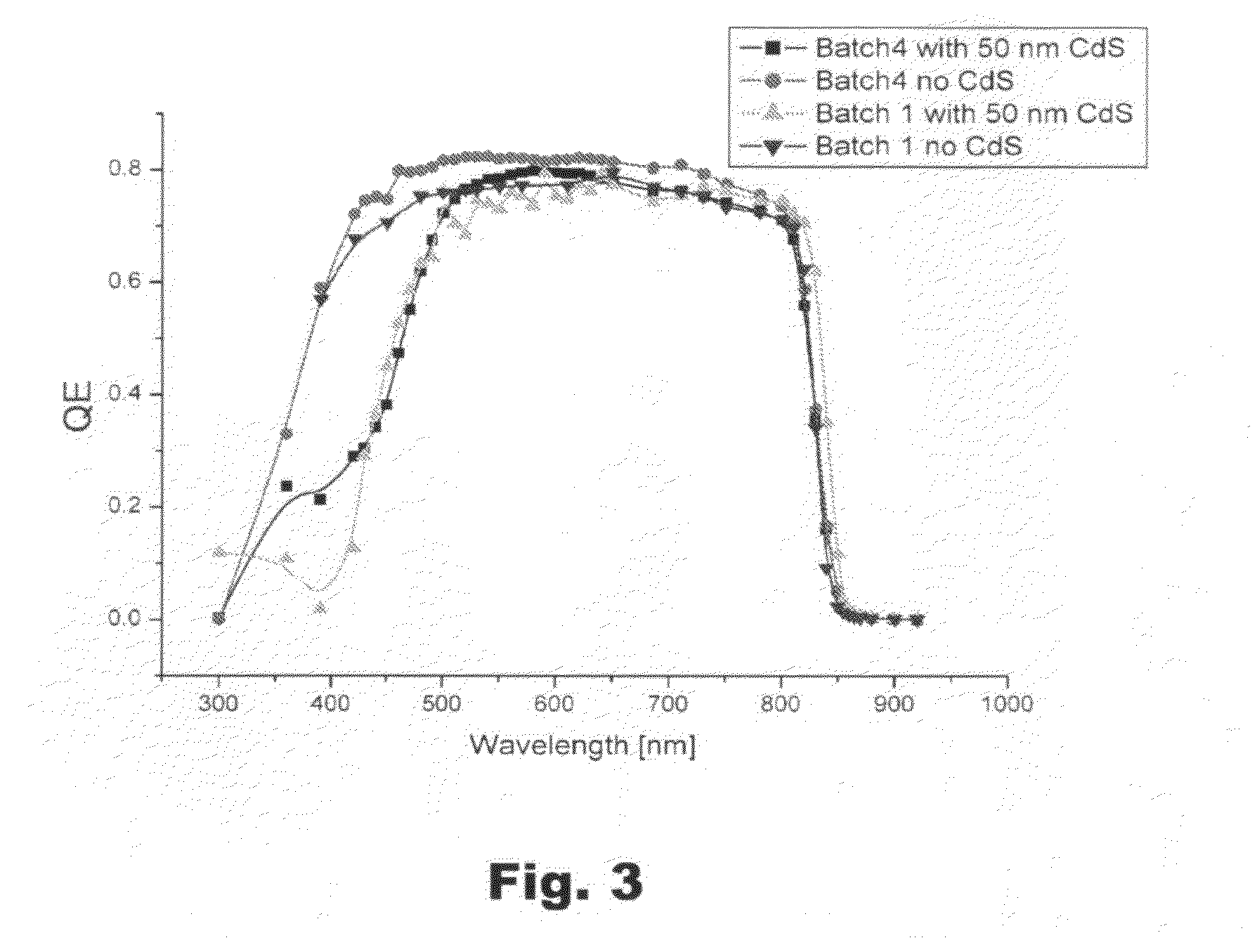Thin film photovoltaic cell, a method for manufacturing, and use
- Summary
- Abstract
- Description
- Claims
- Application Information
AI Technical Summary
Benefits of technology
Problems solved by technology
Method used
Image
Examples
Embodiment Construction
[0028]The present invention is described in more detail in the following by means of the accompanying figures where
[0029]FIG. 1 shows a typical prior art CdTe photovoltaic cell structure,
[0030]FIG. 2 shows schematically one CdTe photovoltaic cell structure according to the present invention,
[0031]FIG. 3 shows a comparison of the relative quantum efficiencies between a prior art device and a CdTe photovoltaic cell according to the present invention, and
[0032]FIG. 4 shows as a flow chart one possible manufacturing method for producing a window layer of a CdTe photovoltaic cell according to the present invention.
[0033]The prior art CdTe / CdS photovoltaic cell 1 of FIG. 1 is formed on a glass substrate 2 which in the figure is the uppermost layer of the device. A transparent conductive oxide TCO layer 3, comprising e.g. fluorine doped tin oxide FTO deposited on the substrate, forms a transparent current collecting layer. Below the TCO layer is an n-doped CdS window layer 4. Adjacent to t...
PUM
 Login to View More
Login to View More Abstract
Description
Claims
Application Information
 Login to View More
Login to View More - R&D
- Intellectual Property
- Life Sciences
- Materials
- Tech Scout
- Unparalleled Data Quality
- Higher Quality Content
- 60% Fewer Hallucinations
Browse by: Latest US Patents, China's latest patents, Technical Efficacy Thesaurus, Application Domain, Technology Topic, Popular Technical Reports.
© 2025 PatSnap. All rights reserved.Legal|Privacy policy|Modern Slavery Act Transparency Statement|Sitemap|About US| Contact US: help@patsnap.com



